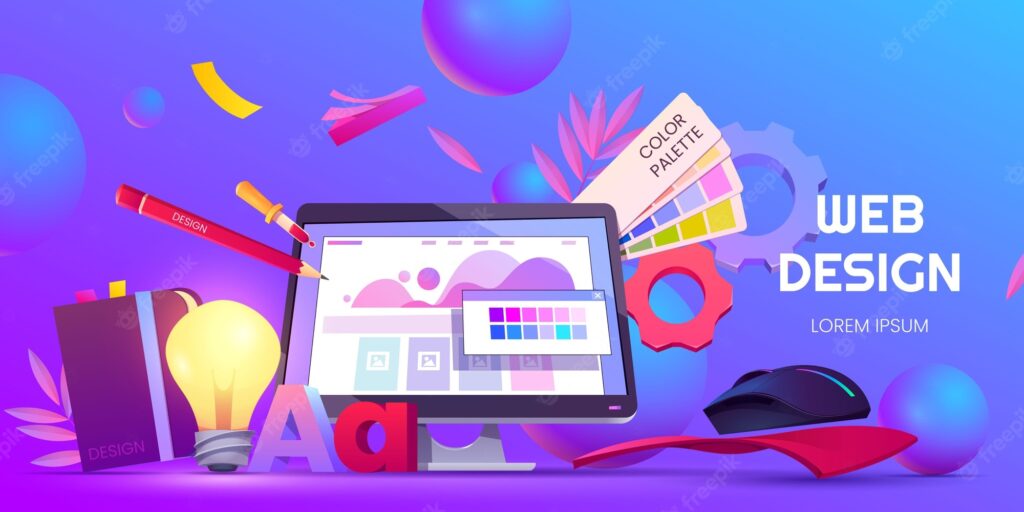To properly draw in visitors and lead them toward significant activities in an increasingly digital environment, when each interaction weighs in on the customer experience, well-crafted websites have always been the point of entry. The arrangement of elements to allow the eyes to move automatically toward the information that matters most first, thus guarantees usability, clarity, and participation. From calibrating header sizes and manipulating contrast with finesse to the proper spacing of elements, all such details work as contributing factors toward a smooth, goal-driven experience. Bespoke Web Design London, therefore, guarantees a polished site that fits with what your audience expects and how they behave, thereby increasing conversion rates and encouraging brand loyalty. Here are eight easy methods to enhance the visual hierarchy of your website layout.
Prioritise Placement and Reading Patterns
Humans have predictable patterns of reading most commonly, in an F-pattern or a Z-pattern. These herbal eye actions are something you may use to your gain when setting elements on a web page. Location your most critical content material like headlines, cost propositions, or calls-to-motion on the top left or centre, wherein users to begin with centre. Secondary content must honour the natural flow, allowing users to read information with comfort. Alignment and positioning are used to guide users gently towards desired actions, making overall usability better. Do not stack on important space; rather, give space for elements to have some air. Well-placed elements can reduce bounce and increase engagement.
Use Colour and Contrast with Care
Colour and contrast are powerful when it comes to deciding what comes forward and what goes into the background. A highly contrasting call-to-action button will draw lots of visual attention, while uninteresting colours can push things at the back out of the way. You can use strong colours to grab attention for important messages or to categorise information visually. But applying too much bright colour is distracting and weakens the effect web design london of hierarchy. Apply a disciplined colour palette that is in keeping with your brand and visually consistent. Be mindful of accessibility, too. Supply enough contrast for visually impaired users. Used well, colour brings clarity and emotional resonance.
Employ White Space for Emphasis
White area, or negative area, isn’t wasted space; it’s a vital design detail that assists with cognizance and go with the flow. Jamming matters into one another overwhelms customers and disrupts visible hierarchy. By providing space between elements, you can highlight what matters. White space makes interfaces look clean, modern, and easy to understand. White space also divides content into manageable bites, making scanning behaviour better. Utilise white space to separate key pieces like CTAs, images, or forms. This visual distinction tells people where one begins and the other ends. Instead of being empty, white space creates beauty and usability all the more powerful.
Use Visual Cues and Direction
Icons, arrows, lines, and even pictures can also be used as directional signals to direct user attention. These directions subtly point out where the user should look next. As an example, a person’s line of vision in a photo aimed at a button can direct the direction of the eye movement of the user. Lines or arrows can guide users step-by-step through a flow or attract them to important information. These are used in combination with text and structure to support visual hierarchy. Employ cues sparingly, and intentionally employing too many
will make your design look cluttered. Combined with other visual aids, directional
cues enhance user web design london understanding and streamline navigation.
Structure Content with Grids and Grouping
Grouping related items together also solidifies hierarchy. For example, placing all forms of contact in one block is intended to show that they belong to a group and are equal in importance. Secondly, separating unrelated content stops cognitive overload. Regardless of card-based design or columns, grids give cohesion and logic. A grid system is a non-visual guide that helps the site appear more legitimate and easy to navigate.
Establish a Visual Flow With Repetition
Repetition creates familiarity. When users are exposed to repeated patterns of buttons, icons, or headings, they immediately understand what these elements are. Repeating visual elements across pages offers a feeling of coherence and helps maintain hierarchy intact. Consider the instance of using a similar style of button throughout all calls to action. This helps maintain that users can recognise them immediately, no matter where they are on the site. Repeating also reinforces brand identity through colour, font, and design. Motif reduces cognitive load so that the user can spend more time on behaviour and content. Rather than being monotonous, smart repetition imparts your site with cohesion and professionalism.
Conclusion
Visual hierarchy is the basis of every good website design. It shapes your website’s visitors’ perception, interaction, and use. By judicious application of design features, including colour, size, alignment, and spacing, you can emphasise the most important material at the best moment. More crucial than web design london looks alone are usability, intent, and user experience. By partnering with Bespoke Web Design, you can guarantee that these rules are not just followed but also especially adjusted to meet your company’s objectives. Used judiciously, visual hierarchy is your best weapon for converting visitors into committed clients. Web design’s first attention getters are what genuinely matter.

